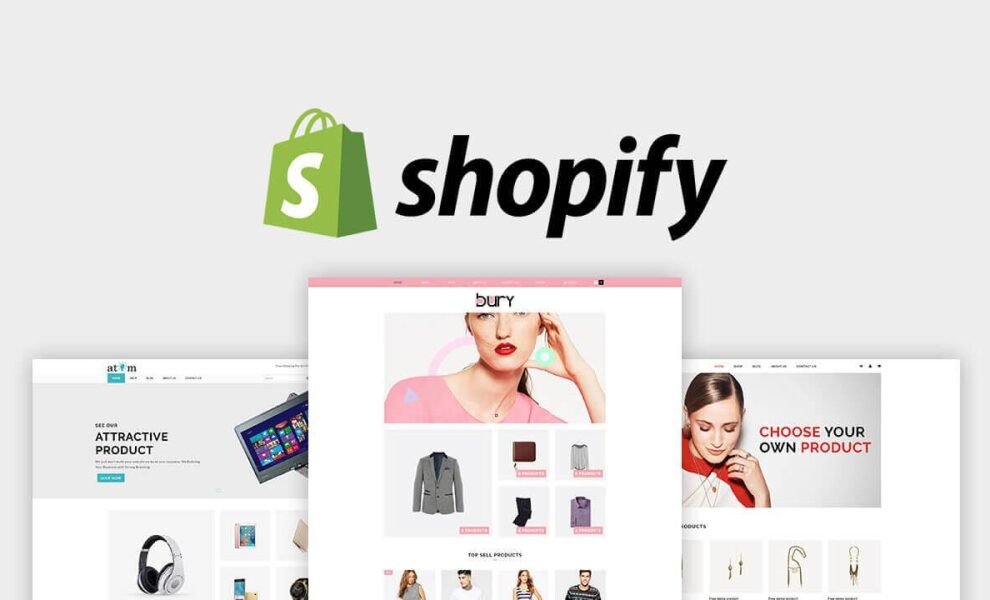Ecommerce design in 2025 isn’t about showing off. It’s about stripping away the noise and building digital storefronts that work. Faster, clearer, smarter. And in a Shopify-dominated world, that means thinking beyond pre-made themes and focusing on experience. Brands that get it right aren’t just selling, they’re building something people want to come back to.
That’s why partnering with a shopify web design company isn’t about giving your homepage a facelift, it’s about designing a growth engine that adapts to how people shop now. Here’s what’s shaping that landscape.
1. Clean, Not Boring
The era of cluttered headers, parallax overload, and rainbow palettes is behind us. Clean, content-forward design leads the charge in 2025. But “clean” doesn’t mean lifeless, it means purposeful.
Spacing is generous. Typography is legible. Elements don’t scream for attention; they guide it. A visitor should know exactly what you sell and why it matters, without reading a mission statement.
2. Micro-Interactions That Matter
There’s a subtle magic when a product tile lifts slightly on hover, or when the “Add to Cart” button gently pulses after a click. These aren’t gimmicks, they’re signals. Feedback that makes the experience feel tactile. In a sea of sameness, those little UX touches build trust and polish.
3. Smarter Product Pages
One-size-fits-all product pages? Not anymore. Brands are tailoring layouts to match the item. Selling electronics? Specs, comparisons, and tech breakdowns lead the way. Apparel? Sizing tools, model photos, lifestyle carousels. Handmade goods? The story behind the maker, close-up textures, unfiltered reviews.
The best stores in 2025 customize the experience to the category, because the same layout that sells sneakers won’t sell skincare.
4. Design That Adapts to Return Buyers
So much focus goes into acquisition. But 2025’s smart stores are optimizing for returning users. Quick reorder buttons, personalized dashboards, loyalty rewards front and center, not buried in a submenu. When you design for retention, revenue grows quietly but steadily.
5. Headless Simplicity (Without the Buzzwords)
Yes, more brands are going headless. But not because it’s trendy, because it solves real problems. Speed. Flexibility. Integration. In 2025, headless Shopify builds are less about developer bragging rights and more about practical performance gains.
Still, it’s not for everyone. Without the right team, headless can turn into a Frankenstein’s monster. Use it when it helps. Don’t chase it for the acronym.
6. Subtle Video and Motion
No one’s waiting for a full-screen video to load anymore. That era’s done. Instead, we’re seeing short, contextual clips. GIF-style motion to explain how a product works. Scroll-triggered transitions that keep the eye moving without hijacking focus.
Done right, motion helps. Done wrong, it’s a bounce rate booster.
7. Built-In Accessibility
Accessibility isn’t a box to tick. It’s just good design. In 2025, high-contrast layouts, large touch targets, and alt-friendly images are non-negotiable. Brands that ignore this lose customers, plain and simple.
The bonus? Accessibility makes things better for everyone, from a customer in low light to someone navigating with one hand on a crowded train.
8. Personalized Without Being Creepy
Forget the aggressive pop-ups that follow you around. The new personalization is light, helpful, and respectful. Smart suggestions based on browsing, tailored content blocks, subtle geolocation nudges, all built to feel intuitive, not invasive.
It’s not about knowing everything about your shopper. It’s about knowing just enough to make the journey easier.
9. AI in the Background
AI isn’t headlining anymore, it’s working behind the scenes. Copy suggestions for product descriptions, predictive sorting of collections, optimized layout testing. Quiet tools doing the heavy lifting so the human team can focus on creativity and strategy.
Shoppers don’t care that AI helped pick the homepage layout. They care that it loads fast, looks sharp, and leads them where they want to go.
10. Real Branding, Not Just Logos
2025 design isn’t just about visuals, it’s about vibe. The brands that stand out nail consistency in tone, color, spacing, and behavior. You don’t just see the brand, you feel it. And that builds memorability in a way no paid ad can.
From the tone of the product titles to the way the checkout flow moves, every detail either adds or subtracts from your brand identity.
Final Thought
Design trends come and go, but customer expectations only rise. In 2025, Shopify stores that win are built for clarity, speed, and adaptability, not flash. A solid foundation, elevated by thoughtful interaction and tailored UX, will always beat a trendy homepage that takes 8 seconds to load.
Whether you’re scaling a legacy brand or launching something new, get the basics right, then add the polish. And above all, design for how people actually shop now, not how you wish they would.
You may like:
What’s Next in Digital Advertising? Key Trends for 2025
Complete Understanding of Digital Experience Monitoring


